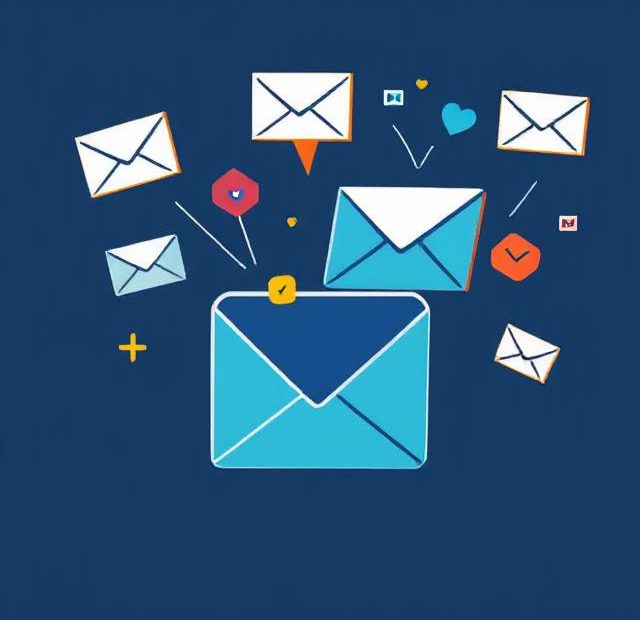In today’s competitive market, small businesses must find smart, efficient ways to reach their audience and grow consistently. One of the most powerful strategies is leveraging email automation tools for small business. These tools help you streamline your communication, save time, and drive better results without hiring a large marketing team.
If you’re a small business owner looking to build customer relationships, increase sales, and stay top-of-mind without constant manual effort, email automation is your secret weapon. Let’s dive into how it works and which tools offer the best features in 2025.
Why Email Automation Matters
Email marketing remains one of the highest-ROI digital marketing strategies — yielding an average return of $36 to $40 for every $1 spent. However, manually sending emails to each customer or segment quickly becomes overwhelming as your audience grows.
This is where email automation tools for small business come in.
With automation, you can:
-
Send personalized welcome emails instantly after signup
-
Remind customers about abandoned carts
-
Re-engage inactive subscribers
-
Deliver promotions, newsletters, and product updates on schedule
The result? More conversions, better engagement, and less time spent.
Key Features to Look For
When choosing an email automation tool, small businesses should focus on features that save time and make marketing easier:
-
Drag-and-Drop Email Builders – Design professional emails without coding.
-
List Segmentation – Group subscribers by behavior, location, or purchase history.
-
Pre-built Automation Workflows – Easily implement common flows like welcome series or cart recovery.
-
Analytics and Reporting – Track open rates, click-throughs, conversions, and more.
-
Integrations – Connect with your website, CRM, or eCommerce platform.
Now let’s explore the top tools that small businesses are using in 2025.
1. Mailchimp
Best for: Beginners and small teams
Mailchimp has long been a favorite for small businesses due to its simplicity and generous free plan. It offers an intuitive interface, pre-made automation templates, and solid analytics.
Key Features:
-
Drag-and-drop email builder
-
Pre-built customer journey templates
-
Real-time performance reports
-
CRM and landing page tools
Pricing: Free for up to 500 contacts; paid plans start at $13/month
2. Brevo (formerly Sendinblue)
Best for: Transactional emails and SMS integration
Brevo is a powerful platform with features beyond email, such as SMS and live chat. It’s a great fit for businesses that want a multi-channel communication strategy.
Key Features:
-
Email and SMS automation
-
Transactional email API
-
Advanced segmentation
-
A/B testing
Pricing: Free for up to 300 emails/day; paid plans from $25/month
3. MailerLite
Best for: Value and simplicity
MailerLite is known for clean design and ease of use. It’s ideal for small businesses who want basic automation without paying for advanced features they won’t use.
Key Features:
-
Drag-and-drop builder
-
Automation workflows
-
A/B testing
-
eCommerce integration
Pricing: Free for up to 1,000 subscribers; paid plans start at $10/month
4. ConvertKit
Best for: Creators, coaches, and solopreneurs
ConvertKit focuses on creators and knowledge-based businesses. It shines when it comes to tagging and segmenting subscribers based on actions.
Key Features:
-
Visual automation builder
-
Subscriber tagging
-
Landing page and form builder
-
Ecommerce support for digital products
Pricing: Free for up to 1,000 subscribers; paid plans from $15/month
5. ActiveCampaign
Best for: Advanced automation and CRM integration
If you’re ready to scale, ActiveCampaign offers powerful automation paired with a built-in CRM. It’s best suited for small businesses that want to run complex marketing campaigns and manage leads.
Key Features:
-
Sophisticated automation builder
-
Lead scoring and sales pipelines
-
Customer journey mapping
-
Deep integration with eCommerce and CRM platforms
Pricing: Starts at $29/month
Tips for Using Email Automation Effectively
Choosing the right email automation tool for small business is just the start. Here are a few tips to get the most from your platform:
-
Start with a welcome series: Automate 2–3 emails introducing your brand and offering value.
-
Segment your audience: Send personalized content to different customer groups.
-
Monitor performance: Use reports to refine your subject lines, CTAs, and content.
-
Clean your list regularly: Remove inactive subscribers to maintain high deliverability.
-
Test and optimize: A/B test campaigns to improve open and click-through rates.
Final Thoughts
For small businesses in 2025, staying competitive means working smarter — not harder. That’s why email automation tools for small business have become essential. These platforms allow you to send the right message, to the right person, at the right time — without being glued to your inbox.
Whether you’re just starting or looking to scale, tools like Mailchimp, Brevo, MailerLite, ConvertKit, and ActiveCampaign offer the flexibility and features needed to grow your customer base and boost sales.
Start small, automate your key emails, and build from there. The earlier you embrace automation, the more time you’ll save — and the more value you’ll deliver to your audience.
Also, you can learn more about eCommerce Stores Win with Email here.
